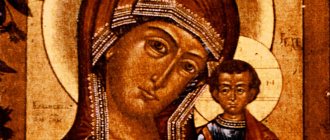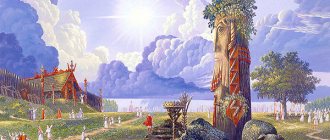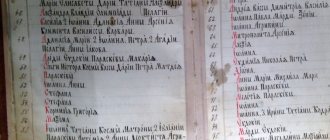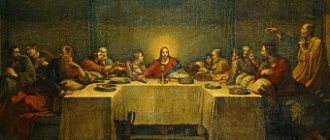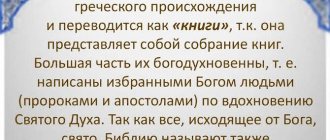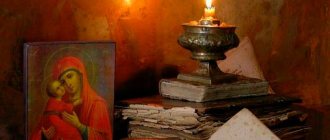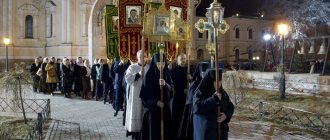Creed text
1. I believe in one God, the Father, Almighty, Creator of heaven and earth, visible to all and invisible.
2. And in one Lord Jesus Christ, the Son of God, the only begotten, who was born of the Father before all ages, Light from Light, true God from true God, begotten, uncreated, consubstantial with the Father, by whom all things were.
3. For our sake, man and our salvation came down from Heaven, and became incarnate from the Holy Spirit and the Virgin Mary, and became human.
4. She was crucified for us under Pontius Pilate, and suffered and was buried.
5. And he rose again on the third day according to the Scriptures.
6. And ascended into Heaven, and sits at the right hand of the Father.
7. And again the coming one will be judged with glory by the living and the dead, His Kingdom will have no end.
8. And in the Holy Spirit, the Lord, the Life-Giving One, who proceeds from the Father, who with the Father and the Son is worshiped and glorified, who spoke the prophets.
9. Into One Holy Catholic and Apostolic Church.
10. I confess one Baptism for the remission of sins.
11. I hope for the resurrection of the dead.
12. and the life of the next century. Amen.
Who composed the creed? The doctrine of faith was set out in this way by the fathers of the First and Second Ecumenical Councils.
What is an Ecumenical Council? The Ecumenical Council is a meeting of pastors and teachers of the Christian Catholic Church, if possible from the entire Universe, for the establishment of true teaching and decency among Christians.
Spelling the name of Jesus Christ
The name of God is holy. The name of Christ Jesus, often found and according to centuries-old tradition written in books, symbolized a certain cultural code and the mysterious significance of the Name. It is no coincidence that the Lord of hosts gives Abram the name “Abraham,” emphasizing from now on the special significance of his personality as the father of many nations. With this approach to the text, the painful reaction of the Old Believers to the change in the name of Christ becomes understandable. A change in the Name with increased religiosity in society meant a change in the Essence. Given the fact that in the religious culture of Ancient Rus' a significant place was given to the Symbol - the Name of Christ carried within itself the category of wholeness, the image of God. And any change in the symbol is tantamount to heresy.
Moreover, “Jesus” is a direct linguistic nonsense, blindly copied from the Greek language in the 17th century.
Synodal bishops, members of the “department of the dominant religion,” such as Demetrius of Rostov and others, in their writings openly mocked and mocked the Old Rite, attributing to it the most nightmarish and blasphemous interpretations and often committed historical falsifications to justify the godless policies of the pre-revolutionary Synod.
About the members of the Creed
How many parts are there in a creed?
To better understand the Ecumenical Creed, we should pay attention to its division into twelve members, or parts, and consider each member separately.
What does each part of the creed say?
Each part talks about:
1 God, the First Hypostasis of the Holy Trinity - God the Father, Creator of the world. 2 Second Person of the Holy Trinity, about the Lord Jesus Christ, the Son of God. 3 Incarnation of the Son of God. 4 the suffering and death of Jesus Christ. 5 The Resurrection of Jesus Christ. 6 The Ascension of Jesus Christ into Heaven. 7 The Second Coming of Jesus Christ to earth. 8 Third Hypostasis of the Holy Trinity, about the Holy Spirit. 10 Baptism, where other Sacraments are also implied. 11 future (universal) Resurrection of the dead. 12 Eternal Life.
Recognition of pouring baptism and its practice
Baptism is the main saving sacrament of Christianity. Its importance and necessity is shown in the Gospel by the Lord Jesus Christ himself. Holy Baptism, in view of its exceptional importance and necessity when entering the Church, has always been the focus of attention of the holy apostles and fathers. The form of baptism was no less important. According to the Apostolic Canons (50th Apostolic Canon), Baptism should be performed only by threefold immersion. Not by one-time immersion, not by dousing, not by sprinkling. The only correct visible way of entering the Church can only be three times immersion in honor of the Holy Trinity. Immersion with one's head in water means the death of a person for sin and his resurrection for Salvation.
Only in cases of extreme need, when it is impossible to immerse a person (physical weakness, being in intensive care, coma, etc.), or there is no water nearby (desert), dousing or sprinkling is allowed. If there was no water, they baptized with saliva, sand, etc. But only in case of the most extreme need. If a person survives after such baptism, he is baptized in the prescribed immersion form. If he does not survive, by the grace of God, he is considered baptized.
It is a completely different matter when dousing or sprinkling under normal conditions for the church acquires the status of a norm. This is no longer baptism, but a canonical crime, for which, according to the rules, a priest or bishop who baptizes out of order is deposed. Pouring baptism was recognized by the Latins and, in the event of conversion to Orthodoxy, they accepted full canonical baptism. This practice had an important place under Patriarch Filaret Romanov. During and after the church “reform” by synodal theologians, pouring “baptism” was recognized, canonically legitimized and theologically justified. The rites of the Latins before anointing were softened.
In the Old Believers, following the sacred Apostolic rules, dousing, sprinkling and other forms of pseudo-baptism do not have any canonical recognition.
Creed - translation
I believe - I believe, I am convinced;
About Christ
Only Begotten - the only one; before all ages - before all time, from eternity;
consubstantial with the Father - having the same being (nature) with (God) the Father; By Him all things were, and by Him, that is, the Son of God, all things were created;
incarnate - having taken upon Himself a human body; becoming human - becoming a man like us, but without ceasing to be God;
resurrected - revived: according to Scripture - in accordance with the Holy Scriptures, where the prophets predicted that He would rise from the dead on the third day;
ascended - ascended; at the right hand - on the right side of God the Father;
paki - again, for the second time; the dead - the dead who will then be resurrected;
There will be no end to His Kingdom - after the judgment, His Kingdom will come endlessly; Life-giving - life-giving;
About the Holy Spirit
worshiped and glorified - the Holy Spirit should be worshiped and glorified equally with the Father and the Son, that is, the Holy Spirit is equal to God the Father and God the Son; The prophets spoke - the Holy Spirit spoke through the prophets;
About the Church
Conciliar - consonant, unanimous, embracing people from all over the universe; I confess - I openly confess in word and deed; tea - I'm waiting; And the life of the next century - eternal life will come after the general judgment.
Realism and the carnal principle in icon painting
An icon is not just an image of Christ, the Mother of God and saints on a board using paint.
In Orthodox iconography, each icon painter reveals in a unique way not human individuality, but the Hypostasis of Christ. Divine Grace descending on the icon transforms its appearance. Each icon connects two infinities: Divine Light and human spirit. On an Orthodox icon, the meaning of the image acquires not a historical, but a spiritual meaning. The Council of the Hundred Heads in 1551 decided to accept Old Russian and Ancient Greek icons, as well as the works of St. Petersburg, as a model of icon painting. Andrey Rublev, Theophanes the Greek and Dionysius.
An Orthodox icon is a special type of self-expression and self-disclosure of the Church; it is a spiritual field in physical space, beauty as an aspect of the Divine. From the point of view of Christian dogma, the icon is evidence that the Son of God became the Son of man, that the Divine Word took on flesh, and the Divine Hypostasis became a God-human Person—specific and unique. God forever took on human nature in order to open to man the path of endless ascent to God, to make His creation a participant in the freedom and perfections of absolute existence.
The Catholic tradition of icon painting provides for the recording of a historical element, supported by a purely carnal perception of events related to the life of the saint. That is why the dominant position of Latin iconography is, for example, the depiction of the sufferings of Jesus Christ on the cross - execution by crucifixion with all realistic details, the Mother of God feeding the Baby Jesus with her milk. This focus - a carnal perception of the historical moment of the economy of human salvation - is completely alien to the patristic tradition. Thus, it is completely unacceptable for an Orthodox person to pray near an image of the Sistine Madonna or a sculptural scene of the Nativity of Christ.
In the 17th century in Russia there appeared a tendency to distribute icons painted in a Western style, when working on which artists gave priority to the development of aesthetic taste. This caused a huge popular protest. And it’s not surprising, because With all the depth of the Orthodox worldview, the people felt the introduction of elements alien to their spiritual experience.
The Latin influence in icon painting manifested itself, first of all, in the emergence of a new style of writing, called “lifelikeness”, from the words: to write “as if alive.” New techniques of realistic painting are introduced into traditional icon painting: light and shadow modeling of the face, elements of naturalism, direct perspective, etc. Even before the official start of the reform, icons and icon painters appeared in the Russian state, whose work raises many questions. The most famous pioneer of the new “icon painting” is Simeon Ushakov, who laid the foundation for human likeness as the central idea of his artistic work. The influence of Latinism with its sensual pseudo-religiosity instead of a sober spiritual life is evident.
But, as already mentioned above, the goal of the Orthodox icon painter is not to depict a historical-physical circumstance on an icon, but to convey the spiritual essence of what is depicted. Thus, painting holy icons not according to Orthodox canons, for example in the style of classical painting, which was widespread in the Russian Empire during the Synodal era, is a discrepancy with Orthodox tradition and the prayer tradition of Eastern icon painters, and therefore should be interpreted as heresy. In the ritual and canonical practice of the modern church, the anthropomorphic style of icon-making, consistent with the Catholic spirit, is stubbornly preserved. It is especially necessary to note that everything that is a product of industrial production is considered unsuitable for divine art. For example, the sale of printed paper reproductions is against the rules; it was prohibited by the council of 1667 and Patriarch Joachim.
Copper casting, which became widespread in the Old Believers, occupies a special place in the history of iconography. In the strict sense of the word, the production of copper-cast icons is also industrial. However, firstly, the icon painter writes the image on a wax surface, and the element of spiritual creativity is preserved. Secondly, metal undergoes thermal cleaning and is a convenient and durable material for imprinting the Holy Face. For Old Believers, in conditions of constant persecution, the production and use of copper-cast icons in prayer practice turned out to be very convenient, and copper casting itself is an integral part of the Old Orthodox culture. Over the centuries, the art of copper casting among the Old Believers reached extraordinary aesthetic heights and skill. The relationship between the Word and the image was completely destroyed at the end of the 17th century. The icon is no longer perceived as an equivalent of the Word, but only as His illustration. In the margins of icons you can often see texts explaining the image, as if the icon painter does not trust the image. In the verbosity, the era loses the concentration of the spirit, does not hear the Word, in the diversity of painting it loses the image. That is why the holy martyr and confessor Archpriest Avvakum, sensitive to spiritual substitutions, was one of the first to rebel against the new manner of icon painting.
Akathists
The site provides a brief overview of the Creed. In the future, the site will be updated with interpretations of akathists and video clips will be made on these akathists.
When reading the akathist at home, it is advisable to take a blessing from the priest. You can read the akathist at a time convenient for you. The reading of the initial prayers begins as in morning and evening prayers, the end of the reading of the akathist also ends with prayers as in morning and evening prayers.
Akathist is a hymn, glorification of God, the Holy One. As a rule, reading is done standing. But, if you are weak, sick, or cannot stand in front of the icon, you can, for example, listen to the akathist at lunchtime at work. Then, of course, you will not be able to strictly follow all the rules.
What matters is that your heart truly desires to glorify the Lord. Therefore, as the Apostle Paul said: “Pray without ceasing” (1 Thess. 5:17). Nothing should be an obstacle to prayer.
Terminology
The distinction between the concepts of “Old Believers” and “Orthodox Church” is quite arbitrary. The Old Believers themselves admit that their faith is Orthodox, and the Russian Orthodox Church is called New Believers or Nikonians.
In the Old Believer literature of the 17th - first half of the 19th centuries, the term “Old Believer” was not used.
Old Believers called themselves differently. Old Believers, Old Orthodox Christians...The terms “orthodoxy” and “true Orthodoxy” were also used.
In the writings of Old Believer teachers of the 19th century, the term “true Orthodox Church” was often used. The term “Old Believers” became widespread only towards the end of the 19th century. At the same time, Old Believers of different agreements mutually denied each other’s Orthodoxy and, strictly speaking, for them the term “Old Believers” united, on a secondary ritual basis, religious communities deprived of church-religious unity
Used materials
- Meyendorff, Paul, Russia, Ritual & Reform.
The Litrugical Reforms of Nikon in the 17th Century , Crestwood, NY: St. Vladimir's Seminary Press, 1991, 177-179, 208-209.
[1] The pre-reform text and description of the correction are given by Meyendorff, Paul, Russia, Ritual & Reform. The Litrugical Reforms of Nikon in the 17th Century
, Crestwood, NY: St.
Vladimir's Seminary Press, 1991, 177-179, 208-209. In turn, Meendorff retells the study of Gesen A., History of the Slavic translation of the creeds
, St. Petersburg, 1884, 57-67.
[2] Here and below the Russian text is given from: prot. Peter Lebedev. A guide to understanding Orthodox worship. St. Petersburg, 1898, pp. 10-11.
Bows at the service
At services in Old Believer churches, a strict system of bows has been developed; replacing prostrations with bows from the waist is prohibited. There are four types of bows: “regular” - bow to the chest or to the navel; “medium” - in the waist; small bow to the ground - “throwing” (not from the verb “to throw”, but from the Greek “metanoia” = repentance); great prostration (proskynesis).
Throwing was banned by Nikon in 1653. He sent out a “memory” to all Moscow churches, which said: “It is not appropriate to do throwing on your knees in church, but you should bow to your waist.”

